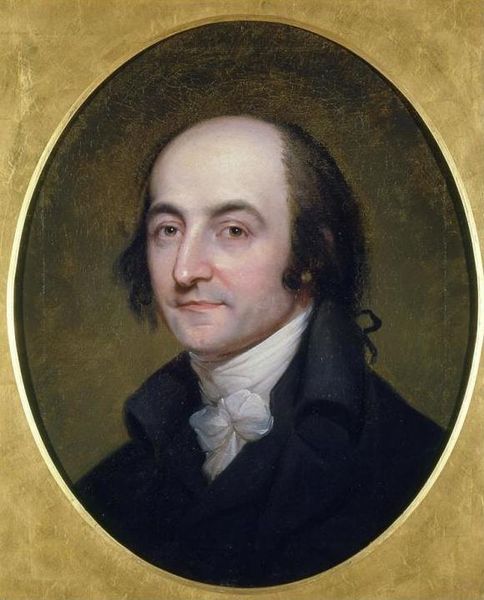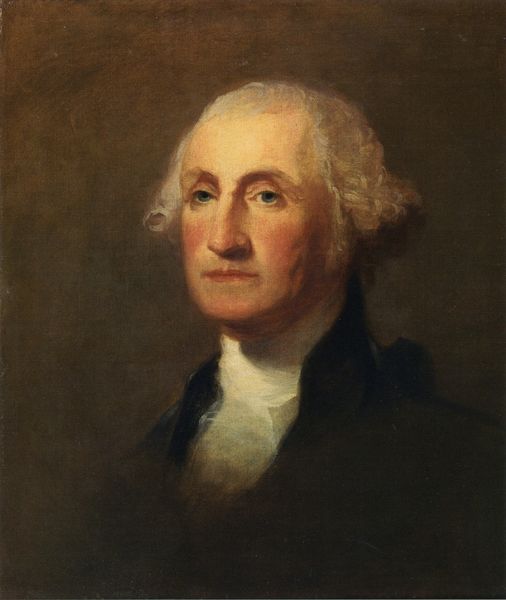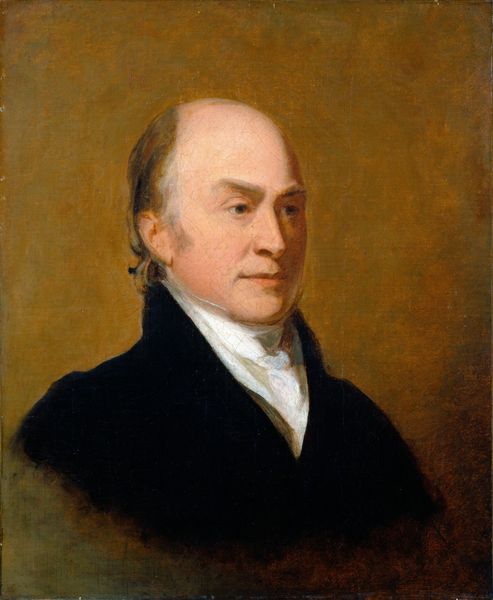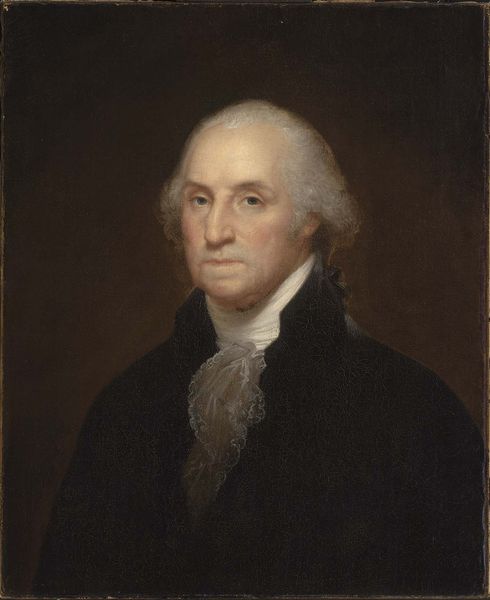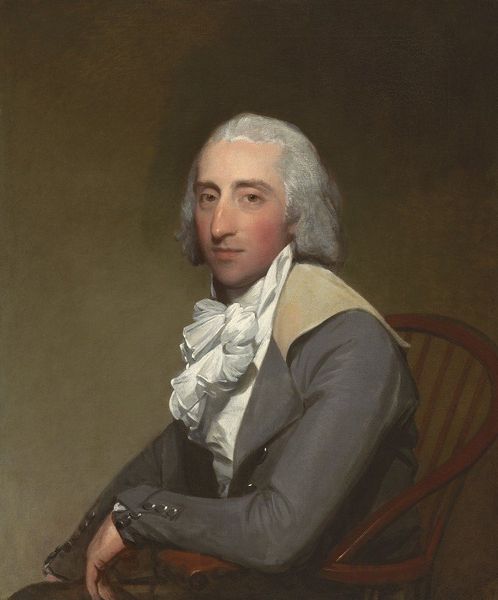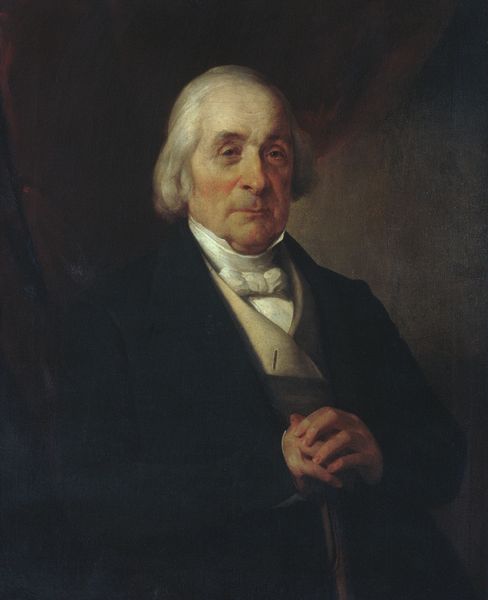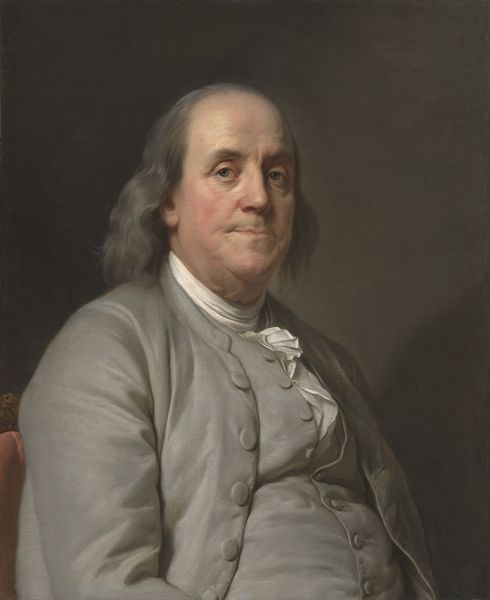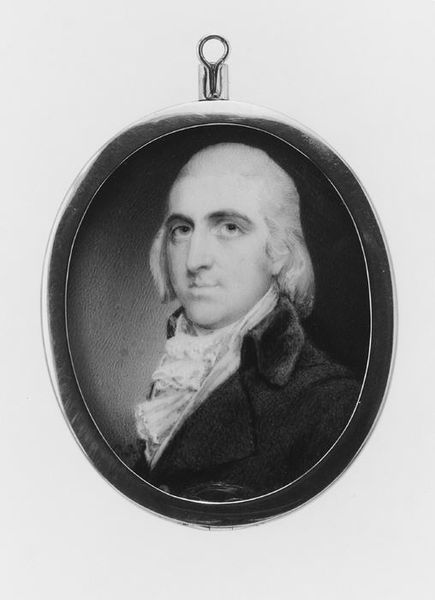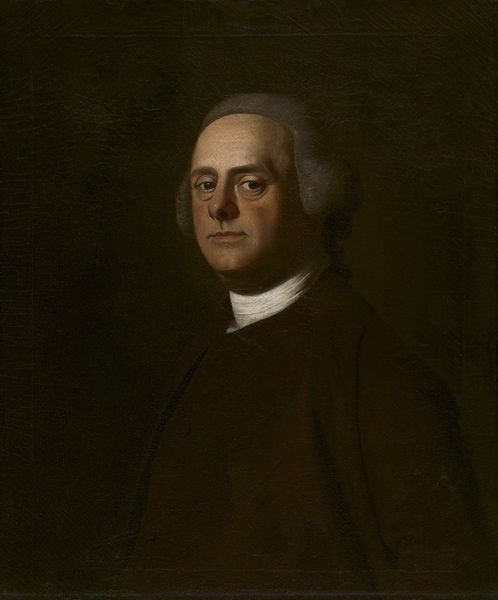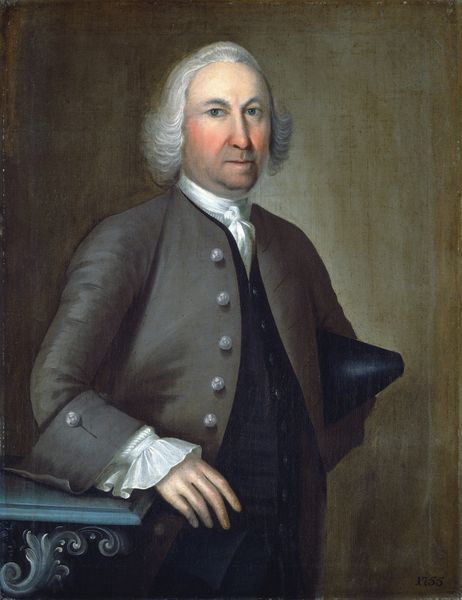
painting, oil-paint
#
portrait
#
neoclacissism
#
painting
#
oil-paint
#
history-painting
#
academic-art
Copyright: Public Domain: Artvee
Curator: Looking at Gilbert Stuart’s "Albert Gallatin," circa 1803, the subject’s gaze and rather severe attire immediately create an impression of seriousness. What do you think? Editor: My initial impression is somber. The red background deepens the shadow, doesn't it? The subdued palette certainly reflects a conservative, neoclassical restraint, almost severe in its formality. How was this effect achieved with the materials? Curator: Indeed, Stuart’s oil paint application appears quite deliberate, building depth in the fabric of the jacket through subtle layering and glazing. Notice also how the raw canvas might peek through thin areas adding depth to the red backdrop? Editor: Fascinating, this calculated frugality extends beyond the paint, doesn't it? How much does it cost for clothing, even back then? His hands hold papers as he would be ready for work. It’s a stark image; a powerful person projecting modesty through skillful manipulation of materials. The linen paper he's holding feels as important as his ruffled jabot. Curator: Absolutely. Structurally, the composition follows the neoclassical emphasis on clarity and order; there’s a palpable sense of balance. Gallatin’s pose directs our eyes to his face. Editor: A portrait designed, one could say, to communicate power not through opulent display, but through controlled representation and a craftsman's knowing eye for surface and texture. One wonders if Gallatin knew he was becoming a propaganda tool, almost. Curator: Ultimately, it serves as a powerful depiction that offers not just an individual likeness, but insight into the values of an era. Editor: It definitely opens a deeper understanding of both its sitter and the modes of making that underpinned the formation of America’s visual culture. Thanks.
Comments
No comments
Be the first to comment and join the conversation on the ultimate creative platform.
